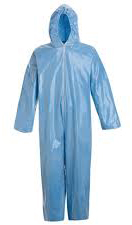
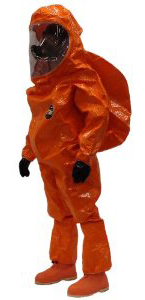 Coveralls (Bunny Suit)
Coveralls (Bunny Suit)
Coveralls are used for a variety of purposes and come in several styles.
Coveralls are sometimes used to protect the environment from the wearer, such as in a clean room.
This type of use is not considered PPE, and will not be covered in this training.
Basic coveralls cover the body, arms and legs which may or may not have elastic at the wrists and ankles.
Another version includes a hood.
The next version includes a hood and attached booties.
Finally, there are versions that will cover a self contained breathing apparatus and are gas tight.
The gas tight suits are also sometimes referred to as hazmat suits and will not be covered in this training.
These suits are manufactured in a number of materials, where the choice of material will depend upon
the materials being used.
It is necessary to evaluate the time it takes potential contaminants to break through the suit, and to ensure
that if the suit is contaminated, it is removed before breakthrough occurs.
The procedures used for donning and doffing will depend upon their intended use.
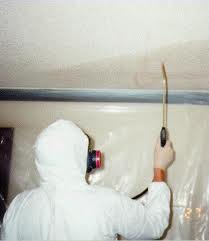
 These suits are sometimes used as a convenience for "protection" from non-hazardous substances such as dusts or water sprays.
They should be used when a lab coat or apron does not give adequate protection.
Depending on the design, they are frequently used in conjunction with other items, such as booties, gloves and respirators.
All materials must be compatible with the chemicals being used.
The requirements for use of coveralls should be listed in the hazard assessment for the work area.
These suits are sometimes used as a convenience for "protection" from non-hazardous substances such as dusts or water sprays.
They should be used when a lab coat or apron does not give adequate protection.
Depending on the design, they are frequently used in conjunction with other items, such as booties, gloves and respirators.
All materials must be compatible with the chemicals being used.
The requirements for use of coveralls should be listed in the hazard assessment for the work area.
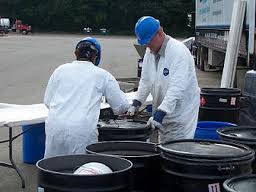
 Coveralls should be sized appropriately to be a comfortable fit.
The coverall and any accessories such as booties, gloves, shoe covers, and caps must be of the proper material for the chemicals being used.
Coveralls have versions that are intended for particulate, liquid, or gas protection.
There are also versions that are meant for single use, limited use (you can reuse them a few times if undamaged or not significantly contaminated), and reusable (can be decontaminated and reused).
Suits for gas protection are not commonly used in the lab, are more complicated to use, and will not be covered in this training.
Chemical compatibility data for various manufacturers of chemical resistant clothing are available on the web.
Links to some of the commonly available ones are given below:
Coveralls should be sized appropriately to be a comfortable fit.
The coverall and any accessories such as booties, gloves, shoe covers, and caps must be of the proper material for the chemicals being used.
Coveralls have versions that are intended for particulate, liquid, or gas protection.
There are also versions that are meant for single use, limited use (you can reuse them a few times if undamaged or not significantly contaminated), and reusable (can be decontaminated and reused).
Suits for gas protection are not commonly used in the lab, are more complicated to use, and will not be covered in this training.
Chemical compatibility data for various manufacturers of chemical resistant clothing are available on the web.
Links to some of the commonly available ones are given below:
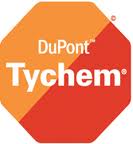

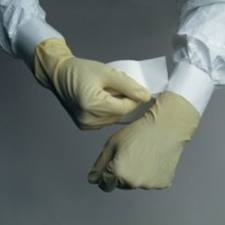
 Carefully inspect the clothing before donning (putting on).
Look for rips or tears or any other signs of damage that might reduce the degree of safety originally provided.
The procedure to use will depend on the type and level of hazard involved.
For uses where no hazardous materials are used, they can simply be put on or taken off like normal clothing.
Carefully inspect the clothing before donning (putting on).
Look for rips or tears or any other signs of damage that might reduce the degree of safety originally provided.
The procedure to use will depend on the type and level of hazard involved.
For uses where no hazardous materials are used, they can simply be put on or taken off like normal clothing.
For use with hazardous materials use the following procedure (or a similar one adapted to your use) to don (put on) the suit.
| 1 |
Inspect clothing and respiratory equipment before donning |
| 2 |
If the suit has attached heavy soled booties, put on chemical resistant shoe covers if required. |
| 3 |
Standing or sitting, step into the legs of the suit;
ensure proper placement of the feet within the suit (if the suit has booties); then gather the suit around the waist. |
| 4 |
Put on chemical-resistant safety boots if the suit doesn't have suitable feet. Tape the leg cuff over the tops of the boots. |
| 5 |
Put on eye protection (safety goggles, face shield, etc) as required and put on respirator if required. |
| 6 |
Put on suitable disposable gloves. |
| 7 |
Put sleeves of suit over arms and pull suit up over shoulders, and zip up front of suit. |
| 8 |
Pull hood (if any) over head carefully so as not to displace eye protection. |
| 9 |
Put on outer chemical resistant outer gloves if required. |
| 10 |
Tape gloves to wrists of suit if required. |
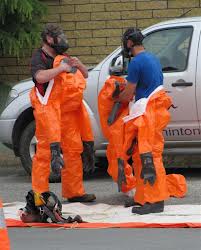 For use with hazardous materials use the following procedure (or a similar one adapted to your use) to doff (remove) the suit.
For use with hazardous materials use the following procedure (or a similar one adapted to your use) to doff (remove) the suit.
| 1 |
Remove outer chemical resistant gloves (if required) |
| 2 |
Pull hood (if any) back off of head. |
| 3 |
Unzip suit, remove arms, one at a time avoiding any contact between the outside of the suit and the wearer's body. |
| 4 |
Sitting, if possible, remove both legs from the suit avoiding any contact between the outside of the suit and the wearer's body. |
| 5 |
Remove eye protection and respirator if required. |
| 6 |
Remove gloves using glove doffing procedure. |
| 7 |
Decontaminate or dispose of coveralls and all additional PPE used. |
 No material is resistant to all possible chemicals.
The suit must be chosen for the chemicals involved.
Even many of the chemicals that the suit is rated for use with, will eventually break through the suit and possibly cause harm to the wearer.
It is important to minimize the contamination to the suit, and to keep track of how long the suit has been exposed to
the hazardous material.
In order to be effective, suit must be worn properly, and removed carefully.
No material is resistant to all possible chemicals.
The suit must be chosen for the chemicals involved.
Even many of the chemicals that the suit is rated for use with, will eventually break through the suit and possibly cause harm to the wearer.
It is important to minimize the contamination to the suit, and to keep track of how long the suit has been exposed to
the hazardous material.
In order to be effective, suit must be worn properly, and removed carefully.
 Coveralls rated for single use should not be used more than once.
If they are rated for limited use, they can be reused several times depending on the usage and the amount of wear.
If they are listed as reusable, they can be used many times, as long as they can be effectively decontaminated in between uses.
Even for expensive suits, there is a tradeoff between the cost of decontamination and the cost of the suit.
The procedure for decontamination must be appropriate for the chemical(s) that the suit was exposed to.
While soap and water will work on many contaminants, it is not a universal solution.
Any materials used for decontamination must be disposed of properly.
Coveralls rated for single use should not be used more than once.
If they are rated for limited use, they can be reused several times depending on the usage and the amount of wear.
If they are listed as reusable, they can be used many times, as long as they can be effectively decontaminated in between uses.
Even for expensive suits, there is a tradeoff between the cost of decontamination and the cost of the suit.
The procedure for decontamination must be appropriate for the chemical(s) that the suit was exposed to.
While soap and water will work on many contaminants, it is not a universal solution.
Any materials used for decontamination must be disposed of properly.
The most commonly used coveralls are listed as limited use.
That means, if it has been contaminated dispose of it, otherwise it may be reused if undamaged.
If it is to be reused, examine it carefully for rips, tears, significant contamination or other damage that may reduce it effectiveness.
Significant contamination is anything that cannot be easily decontaminated or is a substance that will break through the material in a short length of time.
If in doubt, throw it out!
If they are significantly contaminated, contact REM about disposal.
Discard in regular trash if not contaminated when disposal is required.
|





